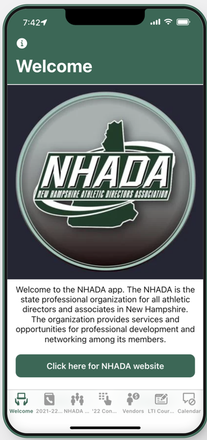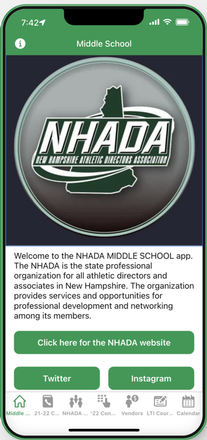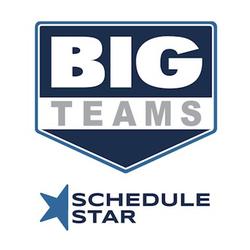RESOURCES - MINDFULNESS and YOGA:
References and Resources
Quick Mindfulness Activities
• Test your Awareness: Do your Test
https://www.youtube.com/watch?v=Ahg6qcgoay4
• TED Talk: Why aren’t we teaching mindfulness?
TEDx Talks May 21st, 2015
https://www.youtube.com/watch?v=-yJPcdiLEkI
• Mindfulness for Teens: Discovering Your Inner Strength: Guided Meditations
http://mindfulnessforteens.com/guided-meditations/ Dr. Dzung Vo
https://programs.alliancefordecisioneducation.org/courses/mindful-choices-secondary
What is Mindfulness?
Introduction to Meditation
Benefits
-
Develop a personal system for coping with distress and stress.
-
Identify appropriate coping and resiliency strategies to manage symptoms of stress, anxiety, loss, and depression.
-
Objectives/Goals
• Students will be able to explain the benefits of mindfulness
• Students will practice a meditation technique to help reduce stress and anxiety
• Students will identify 5 positive coping skills that work for them
Materials
• Feelings Scale
As the students walk in have the feelings scale available.
Ask the students to privately rate their stress level to themselves on a scale of 1-5 (do not share it out loud).
• 5- “I Need Some Help!”
• 4-”I am really upset”
• 3-”I’ve got a problem”
• 2-”Things are pretty good”
• 1- “Feeling Great” Remind students of Objectives for the day:
• Students will be able to explain the benefits of mindfulness
• Students will practice a meditation technique to help reduce stress and anxiety
• Students will identify 5 positive coping skills that work for them
Show students Test Your Awareness: Do The Test (1:08 min) https://www.youtube.com/watch?v=Ahg6qcgoay4
• You might play the video a few times so all students can see the moonwalking bear.
Questions: How many of you saw the moonwalking bear? How many passes does the team in white make?
Today we are going to discuss mindfulness and mediation. "Mindfulness means maintaining a moment-by-moment awareness of our thoughts, feelings, bodily sensations, and surrounding environment" (Mindfulness, 2017).
• For those who carefully counted the passes the team in white made or saw the moonwalking bear, those are qualities of being mindful.
Show TED Talk: Why aren’t we teaching mindfulness?
(14:26 mins)
https://www.youtube.com/watch?v=-yJPcdiLEkI&feature=youtu.be
After watching the TED Talk have the students get out of their seat and do a quick Pair/Share. Question to discuss:
• What are the benefits of mindfulness?
Written Reflective Questions:
-
What is mindfulness in your own words?
-
What are the benefits of mindfulness?
-
Would you try the meditation we did today? Why or why not?
-
How do you rate your stress levels after the meditation?
-
What are 5 positive coping skills that you are willing to try?
Quick Mindfulness Activities
Mindful Eating
Try this during a snack or lunch break. Before you take a bite, look at the food, feel the textures in your mouth, smell it and notice how your body reacts to it. When you take the first bite of any meal, just take a moment to really pay attention to the taste.
You don’t need to keep this up all the way through the meal, but use it every now
and then to focus your attention.
Mindful Mini-break
How often do you find yourself checking email, or your cellphone when you get a quick break in the day? Try something different, at least once each day. Turn away from the computer/tablet/smartphone and sit for 30 seconds to 1 minute, noticing the sensations in your mind and body. How do you feel? What can you hear? Try to be present in that moment. If your mind wanders off to tasks that you have to complete or starts working over things that happened yesterday, say to yourself, “Thinking,” let it go and gently bring your mind’s focus back to the present.
Remember: mindfulness is not about trying to make sense of, or change anything, it’s about attention to that moment.
Mindful Listening
We get used to a lot of the sounds that are around us and quickly tune them out. Or we assign each sound the quality of pleasant or unpleasant. If you live in the city, there might be police sirens, or birds singing, people sneezing, children playing, the sound of traffic, a song playing on a radioin the distance. What can you hear right now?
This is not about judging the sounds as bad or good, it’s about bringing your
attention to the present moment.
Mindful Breathing
At any time during the day, take a moment to focus on your breathing. First, deeply breathe in, then breathe out. Focus your attention on how this feels, where you notice the air moving, how your chest and abdomen move. You may even want to place your hand on your stomach to feel it rise and fall with your breath. Do you notice any changes in how your body feels as you do this? Now return to breathing normally and naturally, just noticing the sensations for 3-5 breaths. You’re not looking for a revelation from these experiences; think of it as exercise for your mind.
Bonus Tip for those stressful days (when you have an important meeting, a test, presentation, etc.) - The moment you walk into the room, take a moment to bring your attention to the present moment. Look around you, notice the room. Take a deep breath in and breathe out, noticing the sensations in your body. If you notice tension in your body, release it with your breath.
Notice the temperature in the room, the light. Notice any sounds you hear without judging them. As you sit down, do you usually cross your legs? Try uncrossing them and place your hands gently in your lap, or on the desk for one moment. As the teacher gives instruction, try to give him/her your full attention without judging the words or adding meaning. If you have a comment or question, do your best to speak clearly and directly, without charge.
If you are trying this before a test, continue to take brief breaks during the test if you find yourself anxious, or forgetting important information. Direct your attention to sensations in your body, and fully focus on one full breath cycle (slowly inhale and exhale).
May all of your present moments be joyful.
Due to the COVID-19 pandemic and widespread protest movements, the state of learning in the world has significantly changed. It has been extremely challenging and yet educators, parents, and students have found creative ways to connect and continue learning together.
At times of transition, we can help our children reflect back on the year – or the month, or even each day – and share the ways they have
continued learning. Help them celebrate and build on their success managing these very challenging times.
To help start the conversation with your students, athletes or your children at home, ask them to reflect and be mindful of a Rose, Thorn, and Bud they have experienced. Help them describe new ideas and things they are looking forward to learning or experiencing this summer or in the coming school-year. Let’s also give them the opportunity to reflect on those things they found challenging so we can better support them.
Instructions
STEP 1: Define terms for the activity
Rose = A highlight, success, small win, or something positive that happened.
Thorn = A challenge you experienced or something you can use more support with.
Bud = New ideas that have blossomed or something you are looking forward to knowing more about or experiencing.
STEP 2: Brainstorm - Give students 30 seconds to a few minutes to sit silently and reflect on their rose, bud, and thorn. Then give students 5-10 minutes to jot down ideas on a piece of paper or print out the graphic organizer by going here: https://www.mindfulschools.org/inspiration/mindful-reflection/
STEP 3: Debrief
Share your own rose, bud, and thorn, and then go around the room asking students to share their rose, bud, or thorn or reflect on the activity itself.
Yoga & Mindfulness for Children (G6-12) - Ann Biese, E-RYT500, RCYT - ChildLight Yoga, LLC, 53 Washington Street, Suite LL100, Dover, NH 03820, 603-343-4116 www.childlightyoga.com
INTRODUCTION
Let’s face it, the adolescent years can be challenging at best. Teenagers experience a myriad of changes during this time of their lives from hormonal changes, neurological changes and other physical changes at an accelerated rate. In this result driven society, tweens/teens are also experiencing a variety of stressors and struggles from pressure to excel academically, demonstrating athletic proficiency, exhibiting a strong desire for peer acceptance, some experiencing body image issues, and sometimes enduring hardships on the home front. Nevertheless, the adolescent years are also a time of self-discovery, curiosity, creativity, independence and awareness of how they can impact the world.
Yoga and mindfulness practices encourages tweens/teens to foster self-care physically, mentally and emotionally by cultivating self-awareness, coping strategies, self-respect and self-acceptance while promoting resilience, balance, confidence and positive self-perceptions.
MINDFULNESS
We’ve all had experiences of “mindlessness” at one time or another. Jon Kabat-Zinn, an expert in the field of mindfulness and founder of Mindfulness-Based Stress Reduction says that mindfulness is, "paying attention on purpose, in the present moment, and nonjudgmentally, to the unfolding of experience moment to moment,” living in the present moment not just thinking about the present moment. Mindfulness is acknowledging and experiencing the sun on your face, noticing the impatience in your body, feeling the happiness and heartache when it arises without having to do something about it or having an immediate reaction or opinion. Mindfulness takes practice and intention.
Adolescents today are confronted with many stressors affecting their physical, mental and emotional well-being:
-
Worry about relationships, family, school, and their future
-
Emotional challenges like loneliness, sadness and lack of confidence, stress and anxiety
-
Physical and cognitive symptoms like fatigue, lack of focus, poor decision making and lack of sleep.
Why mindfulness for tweens/teens? Mindfulness strengthens focus and attention, reduces anxiety and stress; encourages healthy relationships and aids in conflict resolution. Through practice, mindfulness shows tweens/teens how to pay attention allowing them to make informed choices in the heat of the moment rather than hindsight.
BREATHWORK
The breath is an essential element of a yoga practice. The breath, known in yoga as “prana,” is the tie that binds body, mind and spirit together. Unfortunately, we only use about 25% of our lung capacity, clearly enough to sustain our bodies. However, this can often lead to sleep issues, poor focus, low energy, reduced endurance and strength, headaches, sluggish bodily functions, diminished fine motor control and chronic anxiety.
What makes yoga a unique form of exercise is the connection with the breath. Conscious breathing has many benefits:
-
Brings us to a centered, balanced, integrated state.
-
Calms the sympathetic nervous system (fight or flight) engaging the parasympathetic nervous system (counters fight or flight).
-
Provides oxygen to our muscles, organs and cells.
-
Clears thinking and creates focus.
-
Calms and energizes both mentally, physically and emotionally.
-
Allows us to pause to consider the benefits or consequences of our actions.
-
Releases anger and creates space to react with clarity.
Empower Breath: Start in wide Mountain Pose. Reach up to the sun with your right hand while taking a deep breath in. Grab some of the sun’s powerful energy and pull it into the center of your lower ribs (solar plexus / 3rd chakra) with a forced exhale, “HA!” Repeat with your left hand. Continue to alternate hands, pulling in the power and energy of the sun. Great confidence booster, especially when paired with affirmations such as: “I am powerful!”, “When I feel insecure or scared, I reach for the sun and fill myself with light!”
Energy Breath: Inhale through the nose in 3 to 4 quick sniffs, pause, then exhale out through the mouth in one long sigh. Repeat 4 or 5 times. Energy Breath creates a rapid intake of oxygen which helps to ‘fire up’ the brain. It is quite cleansing, helps to boost energy and promotes clear thinking.
Centering
You may wish to start your warm up with a 3-5 minute centering. Centering creates a state of mindfulness, focus and presence in preparation for class. Below is a brief scripted centering activity to start your class.
Sit in a comfortable position (or stand grounded in Mountain Pose) taking several deep, relaxing breaths with eyes closed or softly gazing at a fixed object. As we begin, remember to bring mindful awareness to different parts of the body, without judgment. If any thoughts enter your mind, allow them and let them go. Draw your attention back to your breath as you notice the inflow and outflow… Slowly begin to open your eyes.
Salutations
The back and forth movements involved in the sun salutation series increases flexibility of the spine and large muscle groups. It also benefits circulation, heart, lungs, endocrine, nervous and digestive systems. However, for those who have never practiced salutations before, it’s very important to offer modifications. In addition, it is very common for tweens/teens to have very tight hamstrings. As well, some tweens/teens may not have the core strength to properly and safely support (plank) Chaturanga. Offering the option to place knees on the floor during Chaturanga will help to avoid injury as well as develop awareness for proper alignment. Below you will see offers to modify during certain parts of the salutations.
Sun Salutation A
Photo courtesy of Sensational Yoga Poses
MINDFUL ACTIVITIES
Secret Handshake
Find a partner and create your very own special, secret handshake. Keep in mind, your ‘handshake’ can involve yoga postures and other safe movements! Once partners have created their secret handshake, put on a secret handshake show. Take turns coming into the center of the circle to share with the group.
Double Twist
Partners sit facing in Easy Seated Pose with knees touching. Partners extend their right arms toward their partner’s left hip. Next, reach back and around with left hand and take hold of your partners right hand. Repeat other side.
RESOURCES
Yoga for Children, Lisa Flynn
Yoga for Children Card Deck
Yoga 4 Classrooms Card Deck
Brainstorm-The Power and Purpose of the Teenage Brain, Daniel J. Siegel, MD
How to Talk so Teens Will Listen, Adele Faber
Yoga Exercises for Teens: Developing a Calmer Mind and a Stronger Body, Helen Purperhart
Spinning Inward, Maureen Murdock
Awakening to Mindfulness-10 Steps to Positive Change, Richard Fields, PhD
Yoga Anatomy, Leslie Kaminoff
Join the ChildLight Yoga® & Yoga 4 Classrooms® Community!
ChildLight Yoga / Yoga 4 Classrooms
53 Washington Street, Suite LL100
Dover, NH 03820
603-343-4116
Websites
www.childlightyoga.com
www.yoga4classrooms.com
ChildLight Yoga Blog
www.thekidsyogaresource.com
Yoga 4 Classrooms Blog
www.yoga4classrooms.com/_blog/Yoga_4_Classrooms_Blog/
www.facebook.com/childlightyoga and www.facebook.com/yoga4classrooms
www.twitter.com/childlightyoga and www.twitter.com/yoga4classrooms
https://www.pinterest.com/childlightyoga1/
https://www.instagram.com/childlightyoga/
Introduction -
Yoga is an ancient form of mental and physical exercise. The practice started thousands of years ago in India and has been passed down through the generations and is now practiced worldwide by all cultures and religions. More and more of us are finding that the ancient practice of yoga can be an effective antidote to our frazzled culture.
Translated from Sanskrit, yoga means ‘to yoke’ or ‘union.’ It’s all about the connection between the body and the mind. Doing various yoga postures while focusing on the breath requires mental and physical energy, bringing the physical body into balance with the spiritual mind.
Doing yoga requires a connection to one’s inner self. Continued practice supports and develops this connection, counteracting the effects of stress and eventually bringing us to a more centered place – a place where we are ‘yoked’, body & mind - integrated, focused and relaxed. It is this state of connectedness, from the inside out, that is the essence of yoga.
Yoga and Mindfulness for Children - The term “mindfulness” is very much in the mainstream these days. It is especially a popular concept to bring into schools to help children with their focus, self-regulation, stress reduction and social emotional learning.
When explaining mindfulness to children, ChildLight Yoga® uses this definition: ‘Mindfulness is paying attention to what is happening in the present moment with curiosity and kindness’. This is a simple definition for children to understand. An adult version looks like this: “Mindfulness means paying attention to what’s happening in the present moment in the mind, body, and external environment, with an attitude of curiosity and kindness” (The Mindful Nation. U.K. MAPP, 2015).
Mindfulness -- the specified practice of cultivating awareness, attention, acceptance and non-judgment -- was originally designed for adults and brought into the American mainstream in the 1970s by Jon Kabat-Zinn, the founder of the Mindfulness Based Stress Reduction (MSBR) program that introduced multitudes of adults to mindfulness meditation and yoga as a way to improve their capacity to deal with stress, chronic pain and illness. Today MBSR is practiced all over the world. For more information about the program, you can visit the website for the Center for Mindfulness at the University of Massachusetts Medical School.
There are also lots of programs today like Mindful Schools and Yoga 4 Classrooms®, which currently teach educators how to bring mindfulness into schools.










